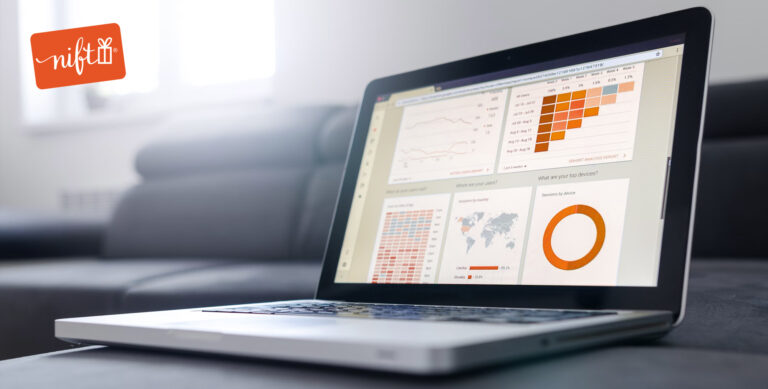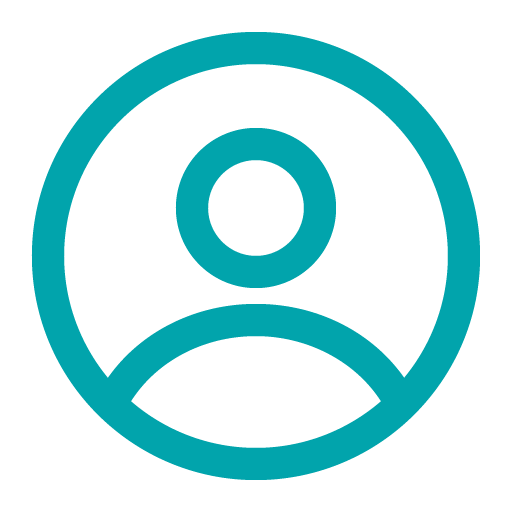Data should be the foundation of your surprise and delight program. Businesses can gain valuable insights into customer preferences by leveraging data analytics, enabling them to create more effective and engaging programs.
But what data should your organization analyze? How can you adjust your approach to foster life-long customer relationships? With this blog, we’ll explore how utilizing data analytics can enhance surprise & delight programs, the specific data metrics you should be measuring, the role of personalization, and how Nift’s Surprise and Delight Program can work with your existing loyalty program to further drive customer satisfaction and engagement.
Customer Behavior and Data: The Ultimate Duo
You probably know your friends and family quite well. You know their likes, dislikes, dietary restrictions, favorite (and least favorite) stores, and quirks like the back of your hand. Why? Because they’re important to you and you care about their happiness—these relationships are critical to your health and well-being.
That’s how organizations need to treat customer relationships, as these connections are essential to their growth and success. To get to know your customers better and increase customer satisfaction, you must get personal with them and conduct a customer behavior analysis.
A customer behavior analysis involves collecting and examining data from various customer touchpoints to understand specific factors influencing customer decisions. You must understand how and why customers interact with your business, including their purchase patterns, preferences, and motivations.
- How do your customers like to shop?
- How often do they make purchases?
- How much do they spend on each transaction?
- Are certain products frequently purchased together?
- What social trends are impacting customer behavior?
A customer behavior analysis can extract this information, enabling your organization to provide a better customer experience and drive engagement.
The Critical Intersection of Data and Customer Surprise & Delight Programs
Data helps fill in the blanks and gives your customer programs direction. It plays a critical role in understanding and predicting customer behavior. Harnessing the correct data can help businesses:
- Identify patterns or trends: Data can uncover deep insights into purchase behaviors, product preferences, and feedback. By analyzing behavior patterns, you can deliver a customer experience that exceeds expectations, driving revenue to your bottom line.
- Personalize the customer experience: Personalization is the key to a successful customer satisfaction program. 89% of marketers see a positive ROI when they use personalization in their campaigns.
- Maximize customer lifetime value (LTV): Loyal customers purchase again and again. If you identify what drives their satisfaction, you can focus on enhancing and improving those experiences to encourage repeat purchases.
- Identify pain points in the customer experience: Data—like churn rate, conversion insights, and cart abandonment rates—can pinpoint precisely where your customers are having challenges throughout the customer journey.
- Improve the customer experience: Creating an extraordinary customer experience will set your business apart from the competition. 73% of customers reported that customer experience is a top factor in purchasing decisions.
6 Customer Satisfaction Metrics You Need to Track
Measuring customer satisfaction helps organizations understand how happy their customers are and if they will continue shopping with them in the future.
Basic quantitative data points like the number of purchases or total website visits only scratch the surface of customer interactions. To enhance customer programs, organizations must take it a step further and uncover deeper insights into customer behavior and preferences. Here are 6 data points you need to start tracking to improve your surprise and delight program:
1. Net promoter score (NPS)
The net promoter score measures customer satisfaction by asking customers how likely they are to recommend their company to others. A high NPS score indicates a strong sense of customer satisfaction. In this case, your customers will likely refer your business to family and friends and continue making purchases.
Measuring NPS is simple. Ask your customers, “On a scale of 0-10, how likely are you to recommend our brand to others?” Responses should be siloed into Detractors (0-6), Passives (7-8), and Promoters (9-10).
Calculate NPS using the following formula: % Promoters – % Detractors.
2. Customer satisfaction score (CSAT)
The customer satisfaction score measures your customers’ satisfaction with your business offerings, customer support, and the overall experience with your brand. A high CSAT indicates your customers are on track to become loyal brand ambassadors. To measure CSAT, use the following formula: (Positive responses) / (Total number of responses) x 100
For example, if you have 100 total responses and 85 are positive, your CSAT would be 85%.
3. Customer retention rate (CRR)
The customer retention rate indicates the number of current customers who stay with you over a set period. Using CRR can pinpoint why customers are staying loyal to your brand. A high CRR indicates that you’re delivering constant value to your customers.
You can calculate CRR by using the following formula: (Customers you have after a length of time) – (New customers acquired that period) / (Customers you started with) x 100
4. Repeat purchase rate (RPR)
The repeat purchase rate measures how often customers return to purchase more products. A high RPR proves that your customers trust your business, are satisfied with the customer experience, and will be loyal in the future.
To measure RPR, use the following formula: (Number of returning customers) / (Number of total paying customers)
5. Churn rate
The churn rate measures how many people choose not to shop with your business. For most surprise and delight metrics, your goal is to get the highest number possible, but your churn rate should be consistently low (ideally between 5% and 7%). High churn rates indicate many problems, like low-quality products or poor customer service.
To calculate your churn rate, use the following formula: (Churned customers) / (Total number of customers) x 100
6. Reviews and direct customer feedback
Quantitative data is critical to improving customer surprise and delight programs, but direct customer feedback is equally important, if not more so. Based on this type of data, whether positive or negative, you can adjust your marketing efforts and programs to serve your customers best.
Customer feedback isn’t as simple as a calculation. You must analyze reviews, social media comments, customer communications, and feedback forms to get the necessary information.
Data is Transforming Customer Surprise & Delight Programs Programs
Simply collecting data doesn’t drive growth; you need to be actionable with that data. Once businesses understand customer behavior clearly, these insights can be used to refine and enhance their surprise and delight programs and brand strategy. As you optimize your program, you will want to consider two critical areas:
- The role of first-party data: Marketers are treading water in an increasingly cookie-less world. Data protection laws have limited businesses from tracking and accessing customer data. Still, with alternative growth channels like Nift, organizations can utilize first-party data to grow their database and surprise and delight programs.
- Customer segmentation: Data-driven insights help identify which rewards and incentives are most appealing to different customer segments. Understanding your target audience and their priorities allows organizations to tailor surprise and delight programs to suit the needs of their customers.
Every program will encounter snags, but a high-performing program uses data to adjust and improve when challenges arise.
Customers Reward Personalized Experiences
Today’s consumer expects brands to understand their unique preferences and deliver tailored experiences. So much so that more than 60% of consumers say they will likely become repeat buyers after a personalized shopping experience. Personalization isn’t just an option anymore; it’s a critical part of marketing and surprise and delight programs.
The most effective personalization strategies go beyond generic rewards, promotions, and incentives. They involve understanding each customer’s journey and delivering relevant, timely, and meaningful interactions.
Personalized experiences surprise and delight your customers, a mindset that’s been a game-changer for our Nift partners. Surprising and delighting customers has proven to be one of the most powerful ways organizations can create memorable experiences that foster unwavering brand loyalty.
While Nift is not a loyalty program, it plays well with partner loyalty programs to drive positive experiences for customers. We think of Nift as a premier Surprise and Delight Program.
Nift supports a closed ecosystem of premium consumer apps, enabling them to give millions of exclusive, high-value ‘thank you’ gifts at key customer life-cycle moments without incremental costs. A simple ‘thank you’ makes a significant impact. Customers who received a gift from the Nift platform are shown to:
- Return 2.2x more often: Nift helps deepen customer relationships. 150,747 ‘thanked’ customers came back to the gym that thanked them, which is more than twice as often as those who did not enjoy a gift.
- Review 25% more: Nift provides smart engagement. First-time reviewers wrote a second review 25% more often than reviewers who didn’t receive a Nift gift.
- Engage 8x higher: Average campaigns will pull a 1% CTR, but thank you emails from Nift see a 7.9% CTR or higher. This increased engagement directly correlates to a revenue increase, and with Nift, recurring revenue goes straight to your bottom line.
It’s a win-win-win for Nift partners, advertisers, and consumers—so much so that experts say partnering with Nift is brilliant. Take, for instance, Liz Kressel, CEO of e-commerce consultancy firm Lizard Strategy, who shares insights on Nift’s partnership with Afterpay in Modern Retail:
“If you think about it from the companies who are offering those rewards, it’s lowering customer acquisition cost. It’s allowing folks to pick what’s relevant to them and getting a lot of first-time trials.”
Learn more about Nift for Partners and discover how you create positive customer experiences and drive revenue by saying ‘thank you.’
About the Author
Kathryn Maguire is the Vice President of Business Development and Founding Member of Nift Networks, a rapidly growing marketplace reshaping how people discover and engage with brands. Nift delivers personalized gifts to consumers, AI-matched to their individual preferences. These gifts are offered through premium consumer apps like Tripadvisor, Afterpay, and Tinder, expressing gratitude during key life-cycle moments. Brands, including HelloFresh, Liquid I.V., and Thrive Causemetics, partner with Nift to gain exclusive access to millions of highly engaged customers.
Under Kathryn’s leadership, Nift has more than doubled its yearly impact, serving millions of consumers and generating substantial profits. She has built and scaled Nift’s partnership network, fostering collaborations with industry giants such as ParkMobile, Planet Fitness, Afterpay (Block), and Tinder. Partners collectively distribute over 50 million Nift gifts each month
Kathryn’s journey began at Forrester Research, where she managed relationships with Fortune 500 executives from companies like Abbott Labs, Cummins Engine, Kimberly-Clark, Leggett & Platt, and Snap-on Tools. In 2005, she co-founded CityVoter, disrupting the local media market through social media and e-commerce. The venture secured over six million dollars in venture capital and grew to a team of 20+ employees. As head of Business Development, Kathryn secured contracts with media giants CBS, Hearst, Gannett, and Belo, driving millions in revenue from clients such as Dell, Gilt Groupe, LevelUP (now GrubHub), KeyBank, and ZipCar.
Kathryn holds a degree from the University of Pennsylvania (Class of 1998). Her vision for Nift is to continue revolutionizing customer acquisition by saying “thank you” through Nift’s innovative gifting platform. Kathryn’s impact extends far beyond the ordinary—she’s shaping the future of customer engagement, one thoughtful gift at a time.
Connect with Kathryn on LinkedIn and explore Nift’s impact at www.GoNift.com


